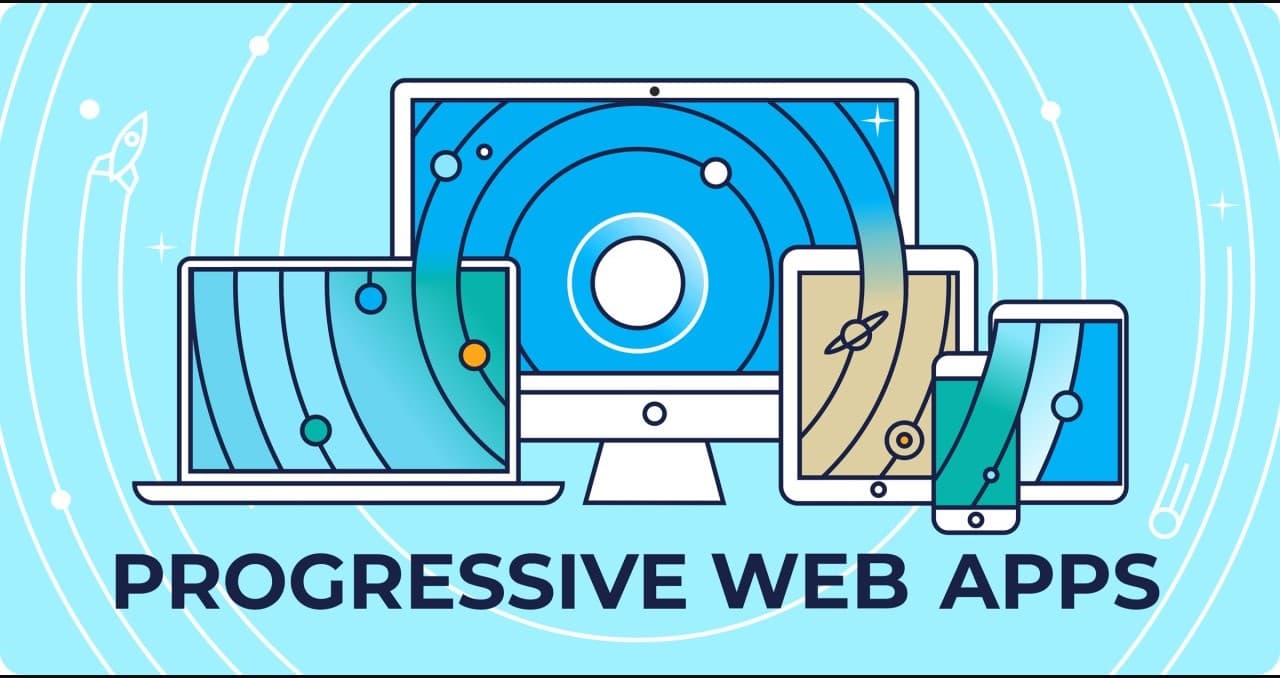The meteoric rise of mobile browsing has fundamentally altered the digital landscape, with smartphones becoming the primary means of accessing the internet for millions of users worldwide. However, traditional websites often fall short in delivering optimal experiences on mobile devices, struggling with issues like slow loading times, poor offline functionality, and limited access to device features. Enter Progressive Web Apps (PWAs), an innovative solution that seamlessly blends the best aspects of websites and native mobile applications.
What are Progressive Web Apps (PWAs)?
Progressive Web Apps represent a paradigm shift in web development, offering a hybrid approach that combines the accessibility of websites with the functionality of native mobile apps. At their core, PWAs are web applications built using standard web technologies (HTML, CSS, and JavaScript) but enhanced with modern features to provide an app-like experience.
Key features of PWAs include:
- Offline functionality: PWAs can work without an internet connection, allowing users to access content and perform certain tasks even when offline.
- Push notifications: Like native apps, PWAs can send push notifications to engage users and provide timely updates.
- Home screen installation: Users can add PWAs to their device’s home screen, creating an app-like icon for quick access.
- Responsive design: PWAs adapt to various screen sizes and orientations, ensuring a consistent experience across devices.
- App-like interface: PWAs offer smooth animations, intuitive navigation, and other UI elements typically associated with native apps.
- Automatic updates: PWAs update automatically, eliminating the need for manual updates through app stores.
Benefits of Progressive Web Apps
The adoption of PWAs offers numerous advantages for both users and businesses:
Improved User Experience:
- Faster loading times: PWAs utilize caching mechanisms to load quickly, even on slow networks.
- Smooth interactions: App-like interfaces provide a more fluid and responsive user experience.
- Offline access: Users can access content and functionality without an internet connection.
- Seamless updates: PWAs update in the background, ensuring users always have the latest version.
Increased Engagement:
- Push notifications: PWAs can send timely, relevant notifications to re-engage users.
- Home screen presence: The ability to add PWAs to the home screen increases visibility and accessibility.
- Cross-platform consistency: Users enjoy a uniform experience across different devices and platforms.
Wider Reach and Lower Costs:
- No app store required: PWAs can be accessed directly through web browsers, bypassing app store restrictions and fees.
- Lower development costs: A single PWA can serve multiple platforms, reducing development and maintenance expenses.
- Improved discoverability: PWAs are indexable by search engines, enhancing their visibility.
| Metric | Average Improvement with PWAs |
| Page load time | 2-3x faster |
| User engagement | 137% increase |
| Conversion rates | 52% increase |
| Data usage | 33% decrease |
Source: Various case studies compiled by Google
How do Progressive Web Apps Work?
The magic behind PWAs lies in their use of modern web technologies, particularly service workers. These are JavaScript files that run separately from the main browser thread, intercepting network requests, caching or retrieving resources, and enabling offline functionality.
Key technical components of PWAs include:
- Service Workers: Enable offline functionality, background sync, and push notifications.
- Web App Manifest: A JSON file that provides information about the app (name, icons, etc.) for proper display when installed on the home screen.
- HTTPS: PWAs must be served over secure connections to ensure user privacy and security.
- Application Shell Architecture: A design approach that separates the app’s core infrastructure from its content, enabling faster load times.
While these technical aspects form the foundation of PWAs, their implementation is largely transparent to end-users, who simply enjoy a faster, more reliable web experience.
Examples of Successful Progressive Web Apps
Numerous businesses across various industries have embraced PWAs to enhance their mobile presence:
- Twitter Lite:
- 65% increase in pages per session
- 75% increase in Tweets sent
- 20% decrease in bounce rate
- Pinterest:
- 40% increase in time spent
- 44% increase in user-generated ad revenue
- 50% increase in ad click-through rate
- Alibaba:
- 76% higher conversions across browsers
- 14% more monthly active users on iOS; 30% on Android
- Starbucks:
- 2x increase in daily active users
- 233% increase in orders on desktop
These success stories demonstrate how PWAs can significantly improve user engagement, conversion rates, and overall business performance across different sectors.
Are Progressive Web Apps Right for You?
While PWAs offer numerous advantages, they may not be the ideal solution for every scenario. Consider the following factors when deciding if a PWA is right for your business:
Advantages of PWAs:
- Cross-platform compatibility
- Lower development and maintenance costs
- Faster time-to-market
- Improved SEO potential
- No app store approval process
Disadvantages of PWAs:
- Limited access to certain device features
- Potentially reduced visibility compared to app store presence
- Varying levels of browser support for advanced features
When PWAs Shine
PWAs are particularly well-suited for:
- Content-driven websites (news, blogs, informational sites)
- E-commerce platforms with straightforward purchasing processes
- Businesses with limited development budgets
- Applications requiring frequent updates
- Services targeting users in areas with poor internet connectivity
When Native Apps Might Be Better
Native apps may be preferable in scenarios such as:
- Applications requiring complex device integrations (e.g., advanced camera features, GPS)
- Games with high-performance graphics
- Apps that need to function entirely offline with full feature sets
- Businesses heavily reliant on app store discovery
The Future of Progressive Web Apps
As web technologies continue to evolve, the capabilities of PWAs are expected to expand, further blurring the lines between web and native experiences. Several trends point to a bright future for PWAs:
- Improved API Support: Browsers are continually adding support for new APIs, enabling PWAs to access more device features.
- 5G Adoption: Faster network speeds will enhance the performance of web-based applications, including PWAs.
- WebAssembly: This technology allows for near-native performance in web applications, opening up new possibilities for PWAs.
- Increased Browser Compatibility: Major browsers are aligning their support for PWA features, ensuring broader compatibility.
| Year | Projected PWA Adoption |
| 2023 | 25% of mobile apps |
| 2025 | 50% of mobile apps |
| 2030 | 75% of mobile apps |
Emerging PWA Capabilities
- Augmented Reality (AR): WebXR API enables AR experiences directly in PWAs.
- Advanced Offline Capabilities: Improved service worker APIs for more sophisticated offline functionalities.
- Enhanced Device Integration: Access to more hardware features like NFC and Bluetooth.
- Improved Performance: Advancements in web technologies leading to near-native performance.
Conclusion
Progressive Web Apps represent a significant leap forward in bridging the gap between web and mobile experiences. By combining the best features of websites and native applications, PWAs offer businesses a powerful tool to enhance user engagement, broaden their reach, and streamline development processes.
Key takeaways about Progressive Web Apps:
- Offer app-like experiences through web browsers
- Provide offline functionality and push notifications
- Improve user engagement and conversion rates
- Reduce development costs and time-to-market
- Continually evolving with advancements in web technologies
As mobile usage continues to dominate the digital landscape, PWAs stand poised to play an increasingly crucial role in shaping the future of web development. Businesses looking to enhance their mobile presence should seriously consider incorporating Progressive Web Apps into their digital strategy, leveraging this innovative technology to deliver superior user experiences and drive growth in an increasingly mobile-first world.



